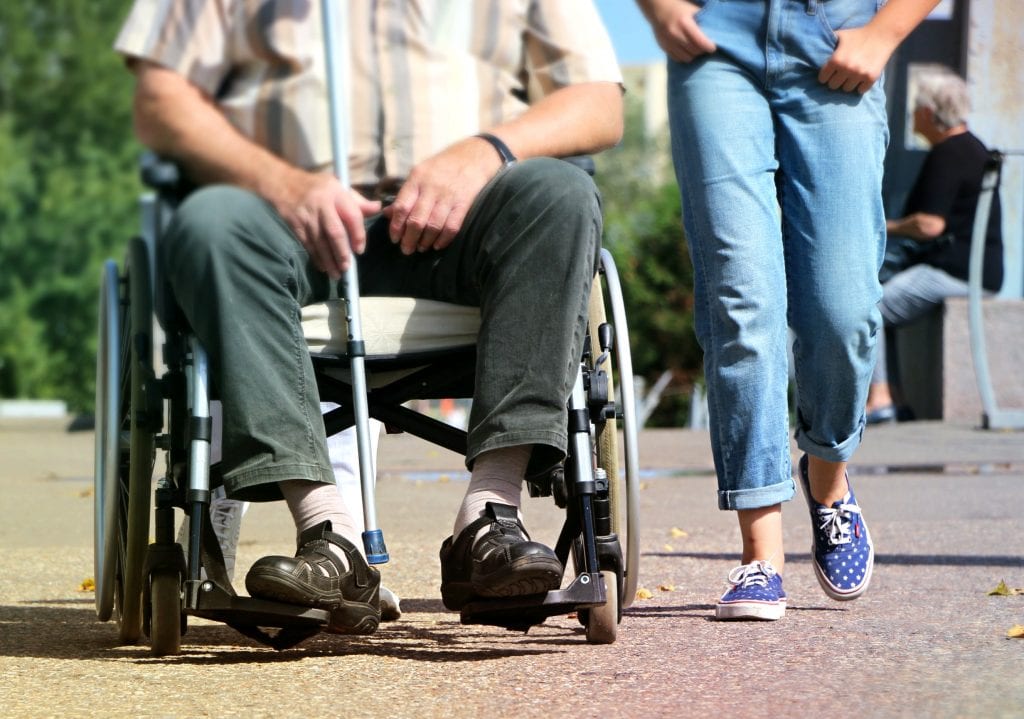It’s estimated that Parkinson’s disease affects more than 10 million people globally, including 215,000 people in Australia. Despite its prevalence, it’s still misunderstood in many ways. In the lead up to World Parkinson’s Day (11 April), we’re looking at common misconceptions people still have about the disease.
Considered an invisible disability, Parkinson’s is characterised by the progressive degeneration of nerve cells in the brain that produce dopamine, a chemical that helps control movement and other bodily functions. It’s a varied condition that can present differently from person to person.
Remember that when you read about these three misconceptions many of us have about Parkinson’s…
Table of contents

Misconception 1: Parkinson’s disease = trembling
Parkinson’s disease is often misunderstood because many people associate it only with the tremors or shaking that can be a symptom of the condition. However, Parkinson’s disease can also cause a range of other symptoms.
Parkinson’s has many faces
Let’s look at other potential physical effects of this disease:
Stiff muscles
Stiffening muscles are often painful and restrict the ability to move.
Slowed movement
Movements can become slower over time (e.g. walking or standing up from a chair).
Reduced coordination/balance
This can cause a person to hunch, stoop or fall over.
Loss of automatic movement
This can include movements such as blinking and swaying your arms while walking.
Changes to speech
Slurring, lack of tonal inflection or speaking faster or softly.
Whatever the symptoms, they gradually become more severe over time and in many instances will result in needing to use a wheelchair or mobility scooter. Parkinson’s affects about 50% more men than women and the full range of symptoms is extensive. You can view a fuller list here.

Misconception 2: Parkinson’s disease only affects older people
While Parkinson’s disease is most commonly associated with older adults, it can also affect younger people, including those in their 30s and 40s.
Young-onset Parkinson’s disease (YOPD) is a term used to describe cases of the disease that occur before the age of 50. While YOPD accounts for only a small percentage of all cases, it can have a significant impact on the lives of those affected.
People with YOPD often face unique challenges, including the need to balance work and family demands with the disease symptoms. They may also face a lack of understanding and support from others who associate Parkinson’s disease only with older adults.
In addition to YOPD, people of all ages can be affected by other forms of Parkinsonism (an umbrella term for conditions with similar symptoms to Parkinson’s like rigidity and tremors). For example, juvenile Parkinsonism is a rare genetic disorder that affects children and young adults.
The disease can also have a significant impact on the lives of caregivers and family members of those with the condition, regardless of age. Caregivers may face a range of challenges, including the need to provide physical and emotional support, manage medications, and navigate the healthcare system.
Misconception 3: Parkinson’s disease is a terminal illness
Another common misconception about Parkinson’s disease is that it’s a terminal illness. While there’s currently no cure for it, it’s a chronic condition that can be managed with medications, therapies, and lifestyle changes.
Some ports of call for treatment include:
- Neurologist
- Movement disorder specialist
- Nutritionist
- Physical therapist
And, of course, your local GP is the foremost port of call. They’ll help steer you in the right direction towards diagnosis stage and then support you throughout the ongoing disease management.
Researchers continue to make breakthroughs in treating diseases like Parkinson’s. Check out our article: Research Advances You Should Know About This Brain Awareness Week 2023.

Parkinson’s visibility this World Parkinson’s Day
By sharing their Parkinson’s status publicly, many well-known people have helped to raise awareness about this condition. Celebrities have reduced the stigma around the illness simply because people often identify with them.
We spotlight three of them this World Parkinson’s Day.
Billy Connolly
Famous Scottish comedian and actor Billy Connolly has been open about his experience with the disease and has used his platform to raise awareness about the condition.
In interviews, Connolly has spoken about the challenges of living with Parkinson’s disease and the impact it has on his life. He’s also emphasized the importance of staying positive and finding joy in life despite the difficulties.
In a 2019 interview with The Guardian, Connolly said, “I don’t have the balance I used to have, I don’t have the energy I used to have, I can’t hear the way I used to hear, I can’t see as good as I used to. But I’m still here. I’m still fighting it. I still find joy in life.”
Linda Ronstadt
Grammy-award winning singer Linda Ronstadt has been open about her experience with the disease and has spoken publicly about how it has affected her life and career. In a 2019 interview with CBS Sunday Morning, Ronstadt spoke about the challenges of living with Parkinson’s, including losing her singing voice:
“I can’t sing at all,” she said. “I’m just not able to sing. Not the way I used to sing, anyway. It’s just a different way of communicating now. But it’s still a communication.”
Michael J Fox
Renowned actor Michael J Fox is perhaps the most famous of celebrities who live with the disease.
He’s perhaps the most outspoken too, via his commitment to raise awareness of the disease and raise funds for the Michael J Fox Foundation for Parkinson’s Research. The Foundation’s ‘single urgent goal’ is ‘Eliminate Parkinson’s disease in our lifetime.’
He says about the disease: “Often people with Parkinson’s think that if you’re symptomatic it’s reflective of some kind of flaw. It’s not, it’s purely a scientific thing”. Michael also says: “I’ve opened up about Parkinson’s on TV to destigmatise it”.
Let’s help do so too, with the first steps educating ourselves on what Parkinson’s is and isn’t, then spreading the word this World Parkinson’s Day.
Interested in reading more from Blue Badge about all things disability? Here are some of our many popular pieces:
- Have You Tried These Fantastic Smartphone Accessibility Features?
- 12 Converted Car Modifications for Drivers with Disability
- Influential Voices Giving Disability Visibility
- 5 Ideas For Random Acts of Kindness Day
Safeguarding for long-term disability
Like dementia and Alzheimer’s disease, Parkinson’s disease can reduce some people’s ability to move. This means they may need to use a wheelchair or mobility scooter, both of which are costly to buy. If this is your situation, consider protecting your mobility equipment in case of breakage or theft – with wheelchair insurance or mobility scooter insurance.
Your disability equipment insurance can save you money by covering costs for repair and replacement up to the agreed amount on your policy. Blue Badge Insurance also provides insurance for wheelchair accessible vehicles and disability converted vehicles, including cover for various drivers of the one car. That way you, your family and carer can be covered (if listed on your policy).
Why not get yourself covered this World Parkinson’s Day?








